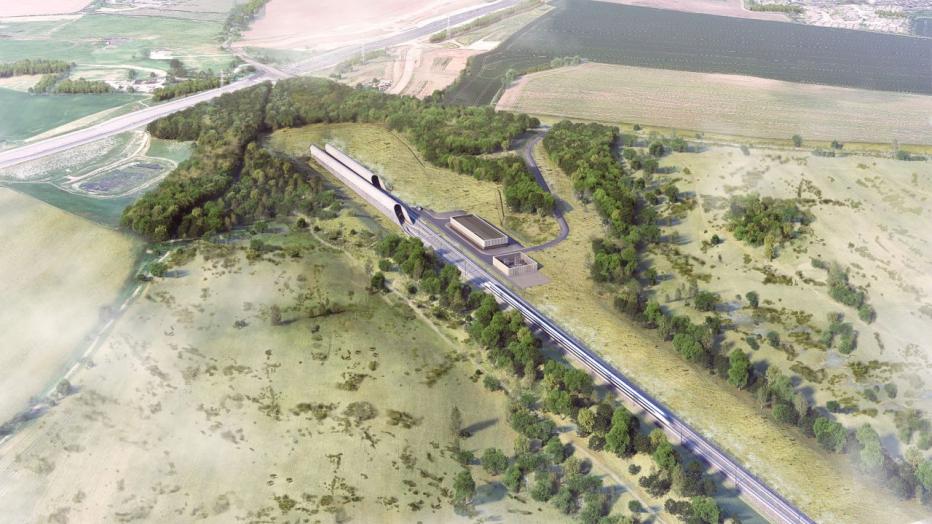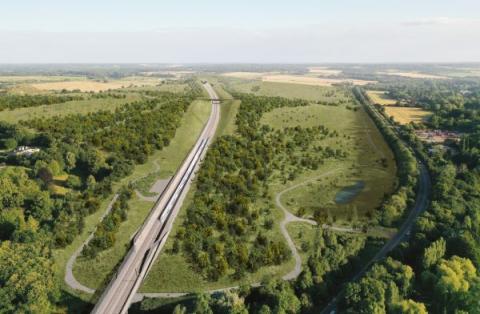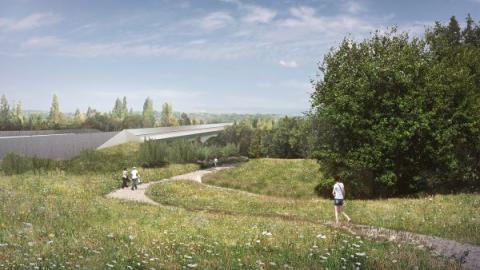




As our clients navigate the digital transformation and growing cyber risks, we have positioned ourselves at the forefront of this growth, adding digital capabilities, products and tools to serve a growing set of customers.



Sit down with our visionary team of thinkers, dreamers and doers to see what a day in the life is like.



A curated selection of some of the top-listened to and trending podcast episodes from our popular If/When podcast series, which has over 7M downloads to date.



Together with our visionary partner, PA Consulting, we're establishing our position in high end advisory services, creating a springboard to expand in high value offerings beyond the core.


At Jacobs, we're challenging today to reinvent tomorrow by solving the world's most critical problems for thriving cities, resilient environments, mission-critical outcomes, operational advancement, scientific discovery and cutting-edge manufacturing, turning abstract ideas into realities that transform the world for good. With approximately $16 billion in annual revenue and a talent force of more than 60,000, Jacobs provides a full spectrum of professional services including consulting, technical, scientific and project delivery for the government and private sector.



Jacobs. A world where you can.



As climate change threatens water security around the world, more communities are turning to water reuse as a resilient water supply solution and embracing the OneWater principle that all water has value. Jacobs has been supporting clients with water reuse programs for decades, beginning with the first applications of advanced wastewater treatment technologies in the 1960s. We provide our clients with a full range of services, from water reuse feasibility studies to design, construction and operations.



The only certainty about the future is uncertainty. Resilience is an attribute of a smarter planet, and requires planning and adapting ahead of potential threats. We help our clients survive, recover, adapt and thrive.



As a purpose-led company, we know we have a pivotal role to play in addressing the climate emergency. We consider this not only good business, but our duty to channel our technology-enabled expertise and capabilities toward benefitting people and the planet.



For more than 30 years, Jacobs has been responsible for planning and implementing Lead and Copper Rule-related strategies which protect millions of people in the U.S. and Canada. Our work includes enhanced water quality monitoring strategies, sampling plan development, harvested pipe-scale analysis, lead service line inventories and replacement plans, corrosion control studies and the incorporation of equity and environmental justice considerations into compliance programs.



Jacobs is working to help clients across the United States secure federal funding for projects that make our cities and communities more connected and sustainable. Working hand-in-hand with clients from coast to coast and everywhere in between, Jacobs develops bold, innovative solutions to address the nation’s toughest challenges.



Now more than ever, we appreciate the hard work, sacrifice and dedication of the medical profession in ensuring the health and safety of our communities.



Together, we are stronger. Together, we can transform the future.



We work in partnership, delivering some of the most challenging, diverse and innovative projects and programs globally across multiple sectors. We integrate complex interfaces across planning, procurement and delivery to help unlock better social, environmental and economic outcomes from mega and giga projects.



We’ve provided design-build services to the water sector for over 25 years and delivered more than 150 projects. We offer fully integrated design-build and design-build-operate capabilities to tackle the most complex water challenges and work in close collaboration with our clients.



Stories that capture our partnerships and innovative impact for a more connected, sustainable world



An ambitious scheme, designed by HS2’s landscape architects, ecologists, engineers and soil specialists, including a Jacobs team, aims to reuse construction materials to create 127 hectares of new chalk grassland, woodland, wood pasture and wetland habitats that will substantially enhance the local natural environment.
The Colne Valley Western Slopes project will be a major contributor in meeting HS2’s carbon reduction targets by delivering significant ecological gain in the Colne Valley. It will also reduce the carbon footprint of the project by reducing road haulage and waste treatment activities and will enable habitats to sequester carbon by replacing arable land with natural habitats.
Plant species and habitats are being carefully selected to be resilient to a changing climate. Almost 65,000 trees and shrubs of 32 species will be planted together with nearly 3.5km of new hedgerows. Around 90 hectares of calcareous grasslands which once thrived on the valley slopes will be established and areas of historic woodland reinstated.
The project, being designed and delivered by HS2’s civils contractor Align, will provide wider health and recreation benefits for neighboring communities including the provision of new connected green spaces and around 4.5km of new footpath, cycling and horse-riding routes. Jacobs is design partner to Align, the high-speed rail consortium of Bouygues Travaux Publics, Sir Robert McAlpine and VolkerFitzpatrick.
Arable land that is initially needed for a major works compound to construct the Colne Valley Viaduct and Chilterns Tunnel will be transformed through the re-use of existing soils and recycling of three million m3 of chalk taken from the tunnel excavation, as well as concrete and limestone aggregate materials used in the construction process.
Reusing materials rather than transporting them away by road will significantly reduce carbon output. The excavated material will be used to re-establish the locally distinctive chalk valley landscape, replicate natural drainage flows and establish the right growing conditions for calcareous grassland across the site.
Calcareous grasslands, which develop on shallow soils overlying chalk or limestone, are a valuable, scarce and rapidly declining habitat in the U.K., with this decline reflected in both the Colne Valley and adjacent Chiltern Hills. The neighboring Chilterns Area of Outstanding Natural Beauty is currently thought to support around 700 hectares of chalk grassland. This collaborative project will provide a unique opportunity to create one of the largest extents of such habitat in this area.
New planting and seeding will create an extensive mosaic of habitat that will potentially be colonised by hundreds of species of flora and fauna, including invertebrates, birds, mammals, reptiles and amphibians.
HS2’s Environment Director Peter Miller said: “This project forms a major part of HS2’s Green Corridor program to establish better connected, sustainable and biodiverse landscapes along the route of the new railway that will contribute substantially to HS2’s carbon reduction target. It demonstrates HS2’s approach to addressing many of the complex issues surrounding climate change and which are central to protecting our environment, and is a great example of how good design and planning can mitigate the effects of climate change.”
Align Project Director Daniel Altier said: “This innovative, multi-discipline project is designed to create a huge expanse of new grassland, connected woodland and wood pasture in the Colne Valley, helping to preserve declining or rare flora and fauna in the area, and providing a lasting legacy for biodiversity and local people. We are pleased to be collaborating on the design with Natural England, Hertfordshire and Middlesex Wildlife Trust, the Colne Valley Regional Park Panel, local authorities, and specialist soils experts.”
Jacobs Ecology lead Matt Hobbs (on behalf of Align) said: “The Colne Valley Western Slopes is a unique opportunity to give something back for wildlife by creating a large new reserve dedicated to nature in the Colne Valley. The design will deliver habitats that are the biggest and best possible, and those that will succeed and thrive over the long term with minimal human input.
“We initially focused on soils and substrates, the essential building blocks for the habitats, and ensuring they are provided using site-won soils, chalk and temporary works materials. The key challenge is creating the necessary physical and chemical characteristics of the soil profiles to support resilient, biodiverse grasslands and the specialist species that thrive there. This is the subject of an innovative research study with Cranfield University and Tim O’Hare Associates that will involve both laboratory and field trials during construction to fine-tune the design.
“A key challenge with habitat creation is how to establish and then maintain the habitats over the long term. The team’s approach uses local land managers who will let natural processes operate and introduce free-roaming livestock to graze the habitats year-round. This will reduce management inputs, increase soil health, soil carbon, and overall biodiversity, while creating a dynamic landscape of wood pasture and wetland over time. The designs include all the necessary infrastructure to support grazing animals year-round including fencing, cattle grids, management areas and wetlands for watering.
“Numerous small-scale features have been included to diversify the habitat further. These include s-shaped sparsely vegetated banks for reptiles and invertebrates, and hibernacula to provide refuges for reptiles and amphibians, as well as localized variations in topography to provide niches for many species to colonize.”

Architect’s impression showing how the HS2 line and the surrounding pasture, wetland and grassland will appear. Image: Jacobs/LDA

Architect's impression of the Colne Valley Western Slopes North Abutment viewing point.
“Our proposals are the result of a truly collaborative endeavor which has compelling landscape and ecological objectives at its center. This is a rare opportunity to establish, at scale, a distinctive and multi-layered landscape, which is inspired by and grounded in the context of the Colne Valley and Chiltern Hills," said Simon Railton, Landscape Architecture lead from the LDA Design/Jacobs team (on behalf of Align).
“We aim to create a landscape which is both rich in biodiversity and a place for people to explore and connect with the natural environment. In doing this we are embracing sustainable design solutions such as green travel opportunities and reuse of construction materials to help achieve ambitious carbon reduction targets.
“Our design team is passionate about achieving an enduring environmental legacy for the project and playing our part in addressing some the biggest issues of our time around climate change and biodiversity loss.”
Jacobs Landscape Design Lead for the Project, Leigh Crowhurst, concluded: “A key to this project’s success has been the openly collaborative and innovative working environment, with the whole integrated design team collectively working towards a defined sustainable vision for the site. Challenging today and reinventing tomorrow really has been central to this, with the proposals seeking to rewild 127 hectares of the site, whilst providing a series of viewing areas and accessible walking, cycling and riding routes that will allow the community to connect with an ecologically diverse landscape for years to come.”
Align is currently preparing the site for the launch of the two tunnel boring machines that will excavate the 16km-long Chiltern Tunnels. Once launched in 2021, the site will receive a continuous supply of chalk until tunnel completion in 2024. Field trials are in preparation ahead of final seeding, and planting of trees and shrubs in 2025. At peak, around 1,200 people are expected to be employed in the design and construction of the Chiltern tunnels and the viaduct, with 50 opportunities for apprentices.
Once detailed design is complete, the local community will be able to see the full plans at HS2's online ‘you said, we did’ webinars which are currently planned for later this month. People can register here: https://www.eventbrite.co.uk/e/colne-valley-western-slopes-and-south-portal-design-update-tickets-140864169523.
The Western Valley Slopes Exhibition is available here.